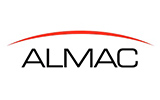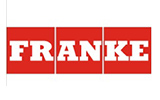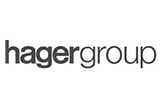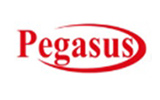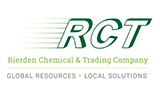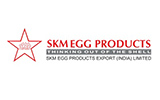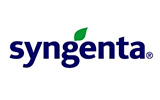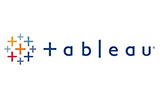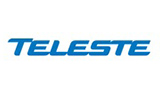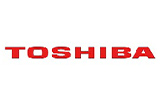

Market Overview
The Malaysia consumer appliances market is expected to experience significant growth between 2025 and 2033, driven by various factors such as economic development, increasing disposable incomes, the rising popularity of smart appliances, and the continued shift toward e-commerce. As of 2024, the market was valued at approximately USD 4.0 billion and is projected to grow at a CAGR of 5.7%, reaching approximately USD 6.5 billion by 2033.
The consumer appliances sector in Malaysia includes a broad range of products, from large major appliances such as refrigerators, washing machines, and air conditioners, to smaller household items like microwave ovens, vacuum cleaners, and coffee makers. While the market is primarily driven by the demand for traditional home appliances, there is a noticeable shift towards smart appliances, with consumers increasingly opting for IoT-enabled devices that offer convenience, energy efficiency, and smart home integration.
Urbanization plays a crucial role in driving the demand for consumer appliances, with urban areas like Kuala Lumpur, Penang, and Johor Bahru contributing significantly to overall market growth. Additionally, the rising middle class and changing lifestyles in Malaysia are expected to fuel demand for premium products, particularly energy-efficient appliances and smart home devices.
The growing awareness of sustainability and the government's push for energy-saving technologies further bolster the demand for appliances that consume less energy, are more environmentally friendly, and offer long-term cost savings for consumers.
Key Market Drivers
Economic Growth and Rising Disposable Incomes
Malaysia has experienced steady economic growth in recent years, with GDP growth rates averaging around 4.5% annually. The expanding economy has been accompanied by a rising middle class and higher disposable incomes, particularly in urban areas. As the standard of living improves, more consumers can afford high-quality consumer appliances that make their daily lives easier, more convenient, and more comfortable.
Increased purchasing power has led to greater demand for a range of products, from essential household items like refrigerators and washing machines to premium offerings such as smart refrigerators, robotic vacuum cleaners, and high-tech air purifiers. This growing affluence is likely to continue to fuel the consumer appliances market, particularly in the premium segment.
Technological Advancements and Smart Appliances
Technological innovation is a major driver in the Malaysia consumer appliances market. The rise of smart home devices, IoT-enabled appliances, and AI-powered machines has changed the way consumers interact with household products. Smart refrigerators, washing machines, air conditioners, and microwave ovens are increasingly being designed to offer more than just functionality. They now feature smart connectivity, allowing users to control and monitor their appliances remotely via smartphones and apps.
Consumers are also looking for appliances that are not only functional but also energy-efficient and environmentally friendly. As more consumers become familiar with these advanced products and the benefits they offer, the adoption of smart and connected appliances is expected to increase. The development of smart homes will further drive demand for these types of appliances, as consumers seek greater automation, convenience, and efficiency in their everyday living.
E-Commerce Growth and Changing Buying Habits
The e-commerce sector in Malaysia has seen significant growth in recent years, and this trend is expected to continue. As consumers increasingly turn to online shopping for a wider range of products, including consumer electronics and home appliances, e-commerce is becoming a dominant channel for product purchases. This is particularly evident in the millennial and Gen Z demographics, who prefer the convenience of online shopping over traditional brick-and-mortar stores.
Online retail platforms such as Shopee, Lazada, and Tokopedia provide consumers with access to a vast selection of consumer appliances, often at competitive prices. The convenience of online shopping, along with the ability to compare prices, read product reviews, and have items delivered to the doorsteps, has made e-commerce a go-to option for many consumers. By 2025, e-commerce is expected to account for around 30-35% of the total sales in the consumer appliances market.
Sustainability and Energy Efficiency
With growing environmental concerns, consumers in Malaysia are increasingly prioritizing energy-efficient appliances. The Malaysian government has been promoting energy-saving technologies through various initiatives, which has encouraged consumers to invest in appliances that are more environmentally friendly. Products such as energy-efficient refrigerators, LED lighting, and low-energy washing machines are expected to see increasing demand as consumers seek ways to reduce their energy consumption and utility bills.
The push toward sustainability is also evident in the demand for eco-friendly products made from sustainable materials, with consumers becoming more conscientious about the environmental impact of their purchases. This trend is expected to drive innovation in the industry, with manufacturers focusing on producing appliances that offer both performance and sustainability.
Shift Toward Premium Products
The demand for premium consumer appliances in Malaysia is on the rise. As more consumers in urban areas have the purchasing power to afford higher-end products, they are increasingly choosing appliances that offer advanced features, better design, improved performance, and long-term durability. The premium segment is growing, driven by the appeal of luxury home appliances such as smart fridges, high-end washing machines, premium air conditioners, and designer kitchen products.
In addition to luxury items, consumers are also gravitating toward appliances that offer superior energy efficiency and longer warranties, reflecting a desire for high-quality products that will deliver value over time. The preference for premium brands such as Samsung, LG, Bosch, and Miele is expected to further boost the premium segment of the consumer appliances market in Malaysia.
Market Segmentation
By Product Type:
By Distribution Channel:
By Consumer Demographics:
Competitive Landscape
The Malaysian consumer appliances market is competitive, with both global and local players striving for market share. Key players in the market include:
Challenges
Future Outlook
The Malaysian consumer appliances market is projected to continue growing steadily from 2025 to 2033, driven by:
By 2033, the market is expected to reach approximately USD 6.5 billion, with smart appliances and premium products driving a significant portion of the growth.
Conclusion
Malaysia's consumer appliances market is well-positioned for sustained growth, driven by economic development, technological innovations, and changing consumer preferences. The shift toward smart appliances, energy-efficient products, and premium offerings will shape the future of the market, while e-commerce will continue to play a significant role in market expansion. With a growing middle class and increasing consumer interest in modern, tech-integrated solutions, Malaysia represents an attractive market for both local and international consumer appliance brands.
